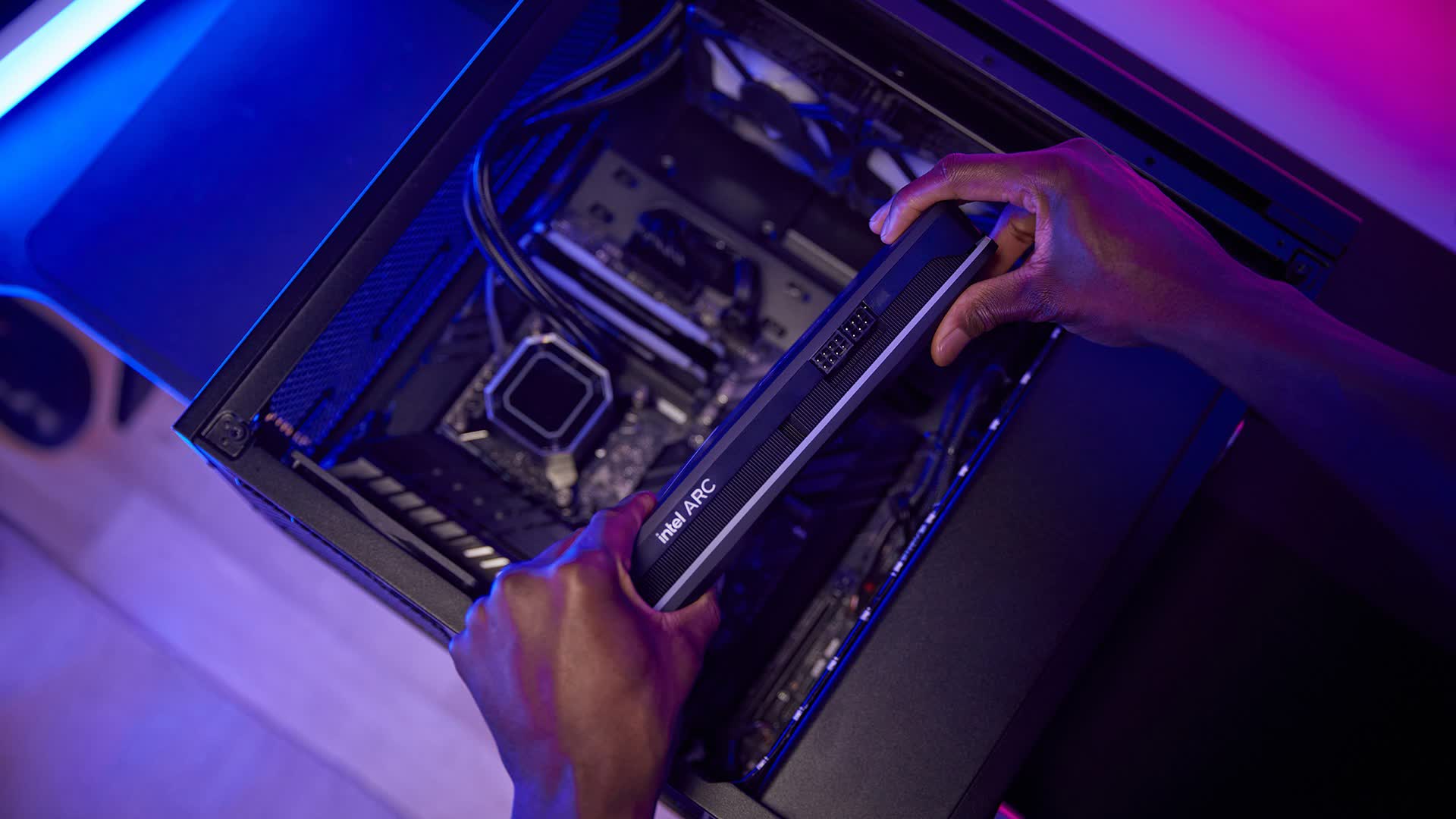What just happened? Although Intel's second-generation Xe2 Battlemage graphics architecture recently debuted in the integrated graphics of Lunar Lake laptops, details about the dedicated desktop variants remain scarce. A potential mid-range model from the lineup has surfaced on Geekbench, but questions about pricing and driver support linger.

An Intel graphics card from the upcoming Arc Battlemage series has appeared on Geekbench for the first time. Although its performance score aligns with mid-range GPUs, its VRAM capacity, exceptionally high clock speed, and lack of detailed specifications raise significant questions.
Listed under the generic "Intel Xe Graphics RI" designation, the unnamed card achieved a 97,943 OpenCL score, placing it in close competition with the Nvidia GeForce RTX 4060 and Intel Arc A770.
[GB6 GPU] Unknown GPU
– Benchleaks (@BenchLeaks) September 25, 2024
CPU: Intel Core i5-13600K (14C 20T)
CPUID: B0671 (GenuineIntel)
GPU: Intel Xe Graphics RI
API: Open CL
Score: 97943
PCI-ID: 8086:E20B
VRAM: 11.6 GBhttps://t.co/GTPSvypbev
However, the mysterious Battlemage GPU recorded a maximum clock speed of 2,850 MHz, significantly higher than the boost clock of any card currently on the market. It's still unclear what role drivers may have played in its performance. Drivers were a primary weakness of Battlemage's predecessor, Alchemist, but Intel has made considerable progress in this area since entering the discrete GPU market.
Additional details suggest that this new card might fall into the upper budget tier of the Battlemage lineup, or possibly at the lower end of the mid-range segment. It could be a successor to the A380 or an entirely new product.
The card's 160 execution units could represent 20 Xe2 cores, which is a substantial increase from the A380's eight cores, but slightly below the 24 cores found in the next-tier A580. Moreover, its 12 GB of VRAM places it between the A580's 8 GB and the A770's 16 GB.

Moreover, Benchleaks identified the GPU as PCI-ID 8086, which had previously appeared in a Linux kernel driver database as a product based on the Battlemage G21 graphics processor. Reports from established leakers suggest that the G21 is the most powerful GPU Intel plans to release in its dedicated Battlemage series, likely supporting multiple products.
The PC used for the Geekbench test featured an Intel Core i5-13600K CPU running at 3.5GHz with a balanced power plan, along with 32 GB of DDR5 RAM clocked at 4,788 MT/s.
Intel is expected to unveil discrete Battlemage cards later this year. If the company avoids the shipping delays that plagued Alchemist, the new cards could hit the market before next-generation GPUs from AMD and Nvidia, which are expected to debut at CES 2025 in January.
With a few weeks head start, the right price, and good drivers, a new mid-range Intel GPU might help it regain the market share that was completely wiped out.
Intel Battlemage desktop GPU hits Geekbench with 12GB of VRAM, 2,850 MHz boost
